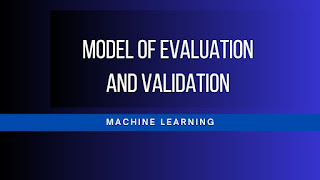In the realm of machine learning, building a robust and accurate model is only part of the equation. Evaluating and validating the model's performance is equally crucial. In this article, we delve into the world of model evaluation and validation, exploring key metrics, cross-validation techniques, and strategies to avoid common pitfalls like overfitting and underfitting. Join us on this journey to unlock the secrets of assessing the effectiveness of machine learning models.
Metrics for Model Evaluation: Unveiling Accuracy, Precision, Recall, F1 Score, and more
To measure the performance of machine learning models, we rely on various evaluation metrics, each shedding light on different aspects of the model's effectiveness.
Accuracy: It measures the overall correctness of the model's predictions, calculated as the ratio of correctly predicted instances to the total number of instances.
Precision: It represents the proportion of correctly predicted positive instances out of the total predicted positive instances. Precision focuses on minimizing false positives.
Recall: It measures the proportion of correctly predicted positive instances out of the actual positive instances. Recall focuses on minimizing false negatives.
F1 Score: It is a harmonic mean of precision and recall, providing a balanced measure of the model's performance.
ROC Curves: Receiver Operating Characteristic (ROC) curves visualize the trade-off between true positive rate and false positive rate across different classification thresholds, enabling us to evaluate the model's performance at different decision boundaries.
Example:
Suppose we have a model that predicts whether an email is spam or not. Accuracy measures how often the model correctly classifies emails overall, while precision focuses on how many of the predicted spam emails are actually spam. Recall quantifies the proportion of actual spam emails that the model correctly identifies. The F1 score combines precision and recall into a single metric for assessing the model's effectiveness.
Cross-Validation: Mitigating the Bias of Training-Test Splits
Cross-validation techniques help assess model performance while mitigating the bias that can arise from a single train-test split. By dividing the data into multiple subsets and iteratively training and evaluating the model, we obtain a more reliable estimate of its performance.
K-fold Cross-Validation: The dataset is divided into K subsets (folds), and the model is trained and evaluated K times, using each fold as the test set once.
Stratified K-fold Cross-Validation: Similar to K-fold, but it ensures that each fold has a proportional representation of classes, addressing class imbalance issues.
Leave-One-Out Cross-Validation: Each instance is used as a test set while the remaining instances are used for training. This technique is useful for small datasets.
Example:
In a K-fold cross-validation scenario with K=5, the dataset is divided into five subsets. The model is trained and evaluated five times, each time using a different fold as the test set. The performance metrics obtained from each fold are averaged to obtain a more robust assessment of the model's performance.
Avoiding Overfitting and Underfitting: Striking the Right Balance
Overfitting occurs when the model learns the training data too well, resulting in poor generalization to new data. Underfitting, on the other hand, occurs when the model fails to capture the underlying patterns and performs poorly even on the training data. Striking the right balance between the two is crucial for optimal model performance.
Regularization: Techniques such as L1 and L2 regularization introduce penalties on model parameters, preventing them from becoming too large and reducing overfitting.
Feature Selection: Proper feature selection helps reduce the complexity of the model, mitigating overfitting.
Ensemble Methods: Combining multiple models
with ensemble methods like bagging, boosting, or stacking can help mitigate both overfitting and underfitting by leveraging the strengths of individual models.
Example:
Suppose we are training a complex neural network model on a small dataset. If we notice that the model is overfitting, we can apply techniques like dropout regularization to prevent over-reliance on specific neurons and promote generalization. Additionally, we can experiment with different ensemble methods, such as combining the predictions of multiple neural networks with bagging or boosting techniques, to improve overall performance and mitigate the risk of overfitting.
Best Practices for Model Evaluation and Validation:
Clearly define the evaluation metrics based on the problem domain and priorities.
Understand the limitations and assumptions of each metric to make informed decisions.
Apply cross-validation techniques to obtain reliable estimates of model performance.
Regularly monitor and evaluate the model's performance on unseen data.
Be cautious of overfitting and underfitting and employ strategies like regularization and feature selection to strike the right balance.
Document the entire evaluation process, including the chosen metrics, cross-validation strategy, and any adjustments made to the model based on the results.
Conclusion:
Model evaluation and validation are critical steps in assessing the effectiveness of machine learning models. By leveraging evaluation metrics like accuracy, precision, recall, F1 score, and ROC curves, we gain insights into the model's performance. Cross-validation techniques help mitigate bias and provide robust estimates of model effectiveness. Avoiding overfitting and underfitting ensures optimal model performance. Remember, the process of evaluating and validating models is an ongoing journey, requiring continuous monitoring and adjustment. So, embrace these practices, evaluate your models diligently, and unlock the true potential of machine learning for making informed decisions in the real world.






No comments:
Post a Comment